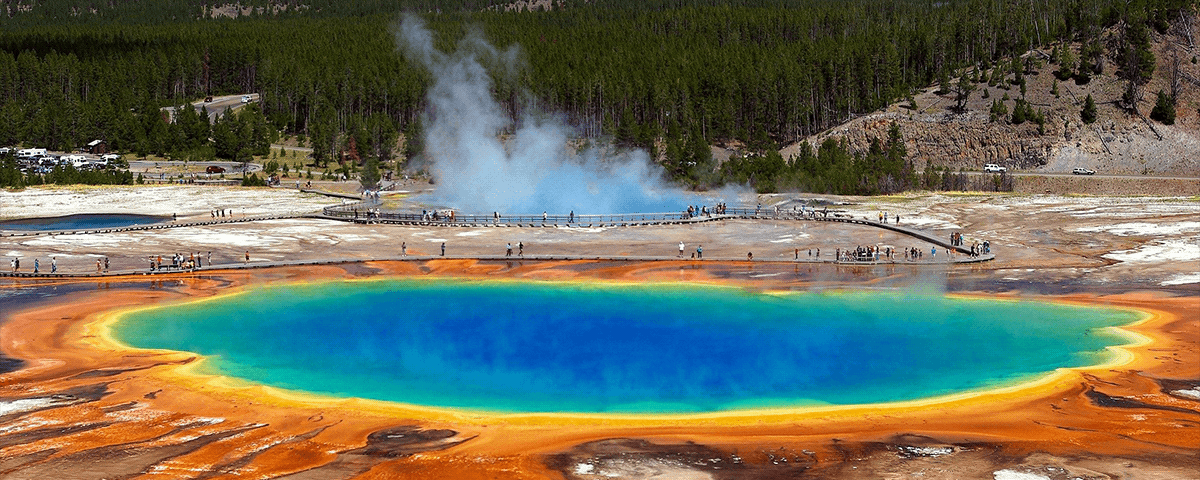
May was mild across much of the contiguous U.S.; heavy rainfall contributed to flash flooding across parts of the Gulf Coast
For May, the average contiguous U.S. temperature was 60.4°F, 0.2°F above the 20th-century average, ranking in the middle third of the 127-year record. The meteorological spring (March-May) average temperature for the Lower 48 was 52.6°F, 1.7°F above average, ranking in the warmest third of the record. Averaged over the first five months of the year, the contiguous U.S. temperature was 44.6°F, 1.3°F above the 20th-century average, ranking in the warmest third of the January-May record.
The May precipitation total for the contiguous U.S. was 2.94 inches, 0.03 inches above average, ranking in the middle third of the 127-year period of record. The spring precipitation total was 7.53 inches, 0.41 inches below average, ranking in the driest third of the March-May record and was the driest spring since 2006. The year-to-date precipitation total was 11.65 inches, 0.74 inches below average, ranking in the driest third of the 127-year record. This was the driest such year-to-date period since 2012.
Torrential rainfall, associated with slow-moving thunderstorms across parts of coastal Texas and Louisiana on May 17-18, brought widespread flash flooding and power outages and resulted in hundreds of water rescues. More than a foot of rain fell near Lake Charles, Louisiana, still recovering from damage caused by Hurricanes Laura and Delta, which made landfall across the region last summer.
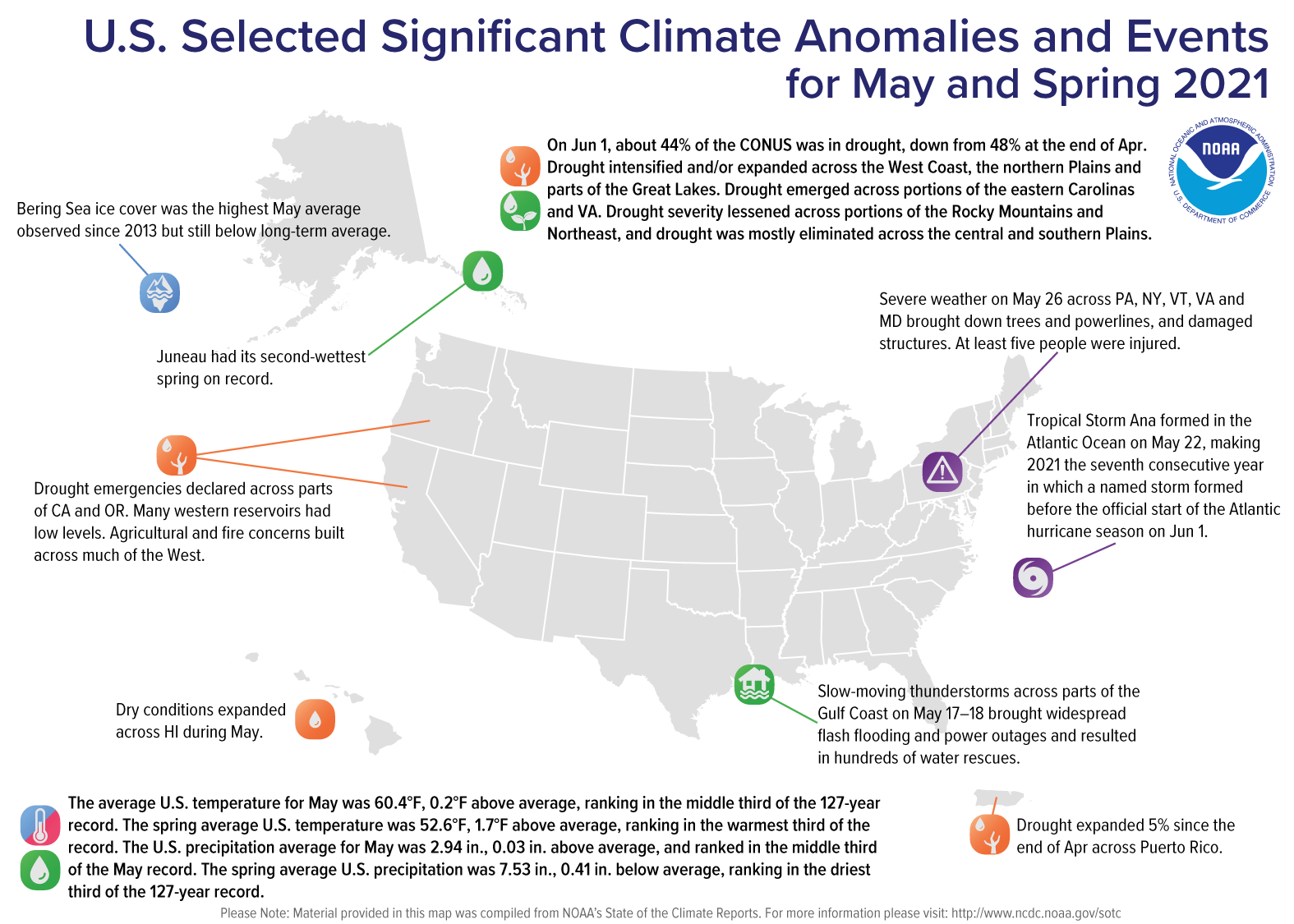
This monthly summary from NOAA National Centers for Environmental Information is part of the suite of climate services NOAA provides to government, business, academia, and the public to support informed decision-making.
May
Temperature
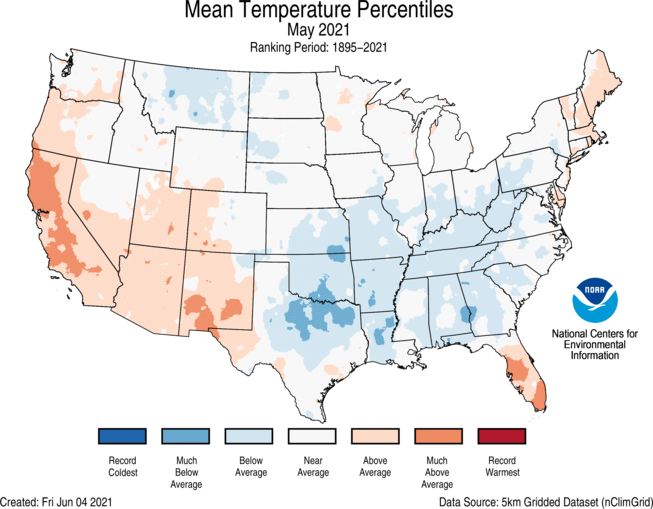
- Temperatures were below average across portions of the northern Rockies as well as the central and southern Plains, central Gulf Coast, Southeast, and into the Ohio Valley.
- Temperatures were above average across parts of the West Coast, Southwest, New England, and Florida.
- The Alaska average May temperature was 40.2°F, 2.4°F above the long-term mean, which ranked in the warmest third of the historical record for the state. Temperatures were cooler than average across parts of the Panhandle. Temperatures were above average across much of the western, central, and southern portions of Alaska.
- Aided by near- to below-average spring temperatures in the region, the Bering Sea ice average extent during May was the highest since 2013 but still lower than average levels observed during the 20th century.
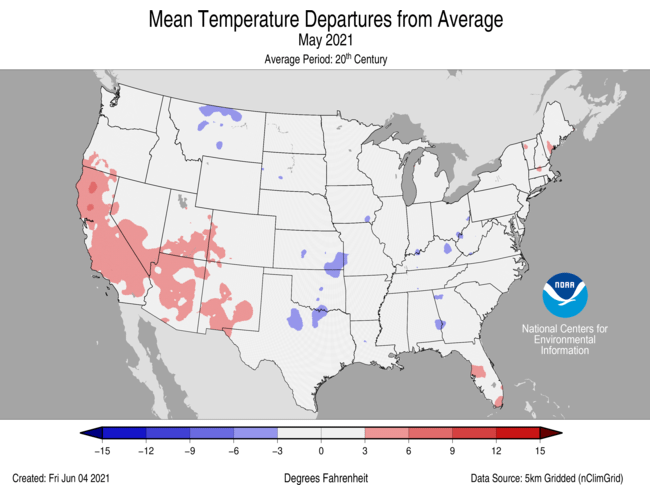
Precipitation
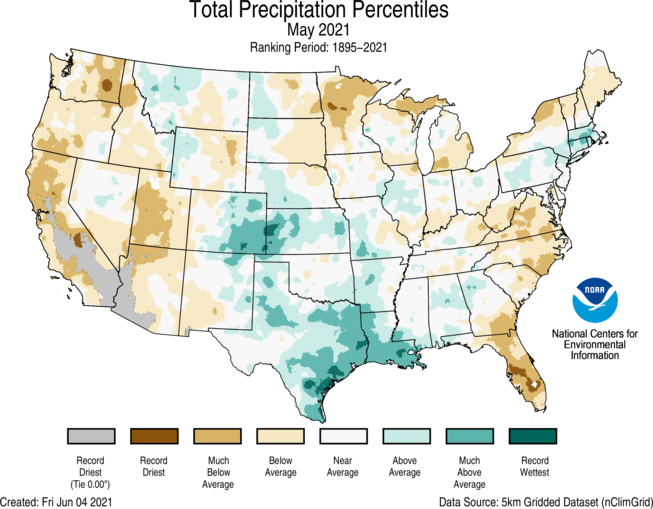
- Precipitation was above average from the central and western Gulf Coast into portions of the central Plains and scattered across parts of the northern Rockies and southern New England. Louisiana and Texas ranked fifth wettest on record for May.
- Precipitation was below average across much of the West, portions of the northern Plains, Great Lakes, northern New England, mid-Atlantic, and Southeast. California ranked fourth driest while Utah and Florida ranked ninth driest during May.
- Despite precipitation across Alaska ranking near average for May, much of western Alaska was drier than average, and eastern Alaska wetter than average.
- According to the June 1U.S. Drought Monitor report, 43.7 percent of the contiguous U.S. was in drought, down about 4.7 percent from the end of April. Drought intensified and/or expanded across California, Oregon, Washington, the northern Plains, parts of the Great Lakes, and across Puerto Rico and Hawaii. Drought emerged across portions of the eastern Carolinas and Virginia. Drought severity lessened across portions of the Rocky Mountains, and Northeast and drought was mostly eliminated across the central and southern Plains.
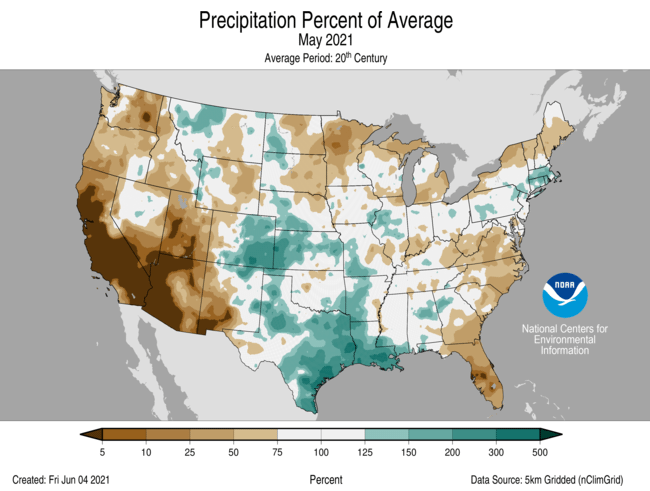
Other Notable Events
- Tropical Storm Ana formed in the Atlantic Ocean on May 22, making 2021 the seventh consecutive year in which a named storm formed before the official start of the Atlantic hurricane season on June 1.
Spring (March-May)
Temperature
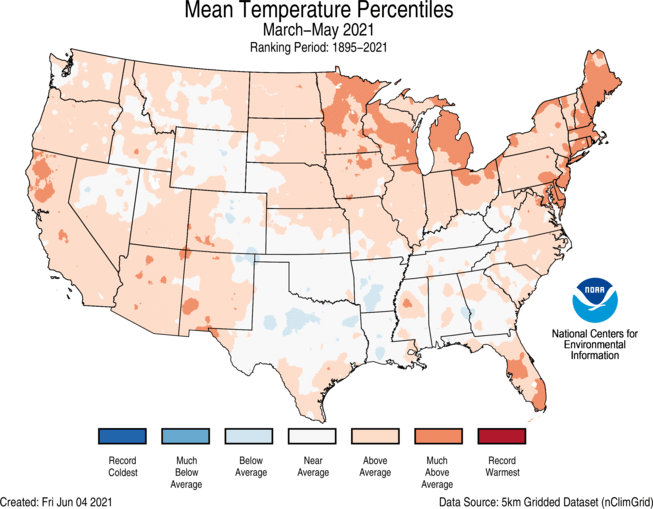
- Temperatures were above average across much of the West and from the northern and central Plains to the Northeast and along much of the East Coast. Maine ranked seventh warmest for spring. No state across the Lower 48 ranked below average for the season.
- The Alaska spring temperature was 24.4°F, 0.5°F above the long-term average, ranking in the middle third of the record for the state. This was the coolest spring across Alaska since 2013. Temperatures were above average across the Aleutians and portions of northern Alaska and below-average across parts of eastern-interior Alaska.
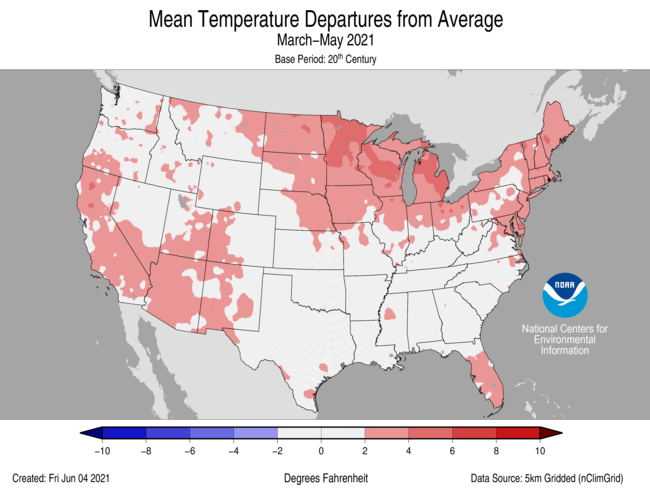
Precipitation
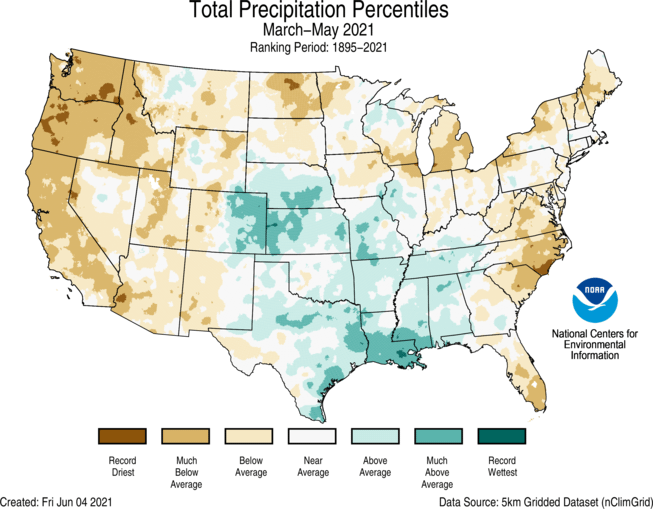
- Spring precipitation was above average from the central High Plains to the Mississippi River and south to the Gulf of Mexico. Louisiana ranked fourth wettest for the season.
- Precipitation during March-May was below average across much of the West, Great Lakes, and East Coast. Idaho, Oregon, and the state of Washington ranked second driest for the spring season, while California ranked fourth driest.
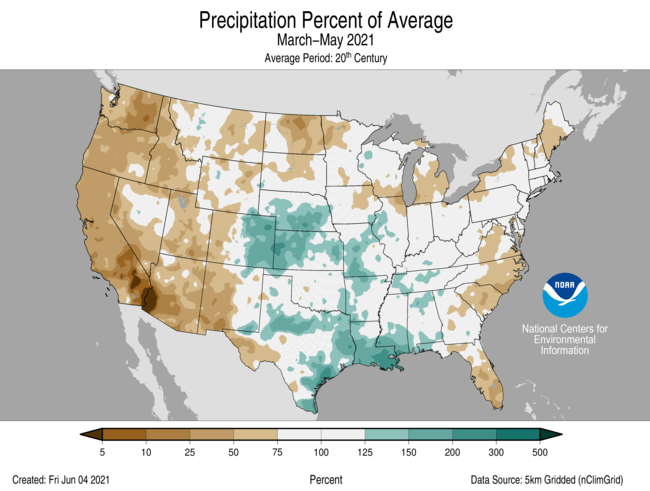
Year-to-date (January-May)
Temperature
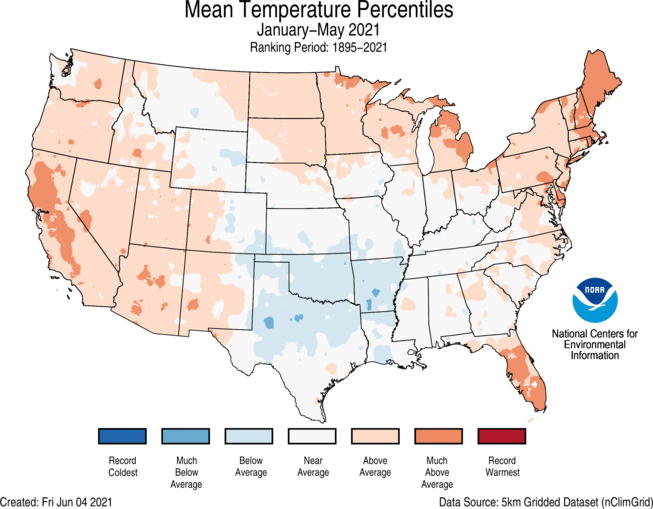
- Temperatures for the year-to-date period were above average across much of the West, northern Plains, Great Lakes, Northeast, and Florida. Maine ranked fifth warmest on record for the January-May period. Below-average temperatures were concentrated across portions of the southern Plains.
- The Alaska year-to-date temperature was 17.0°F, 1.2°F above average, ranking in the middle third of the historical record. Temperatures were above average across the Aleutians, Bristol Bay, Northwest Gulf, and portions of the southern West Coast regions. There were no large areas of below-average temperatures for the year-to-date period across Alaska.
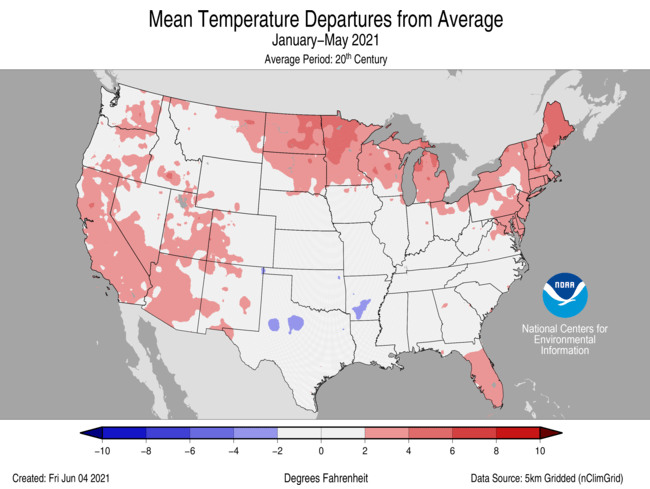
Precipitation
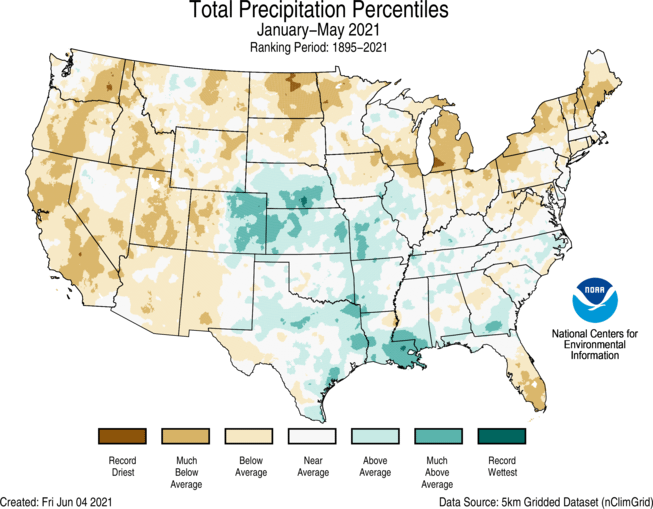
- Above-average precipitation prevailed across much of the central and southern Plains as well as the western and central Gulf Coast.
- Below-average precipitation for the year-to-date period occurred across much of the West, Northern Tier, Northeast, and Florida. North Dakota and Michigan ranked seventh driest while Utah ranked eighth driest.
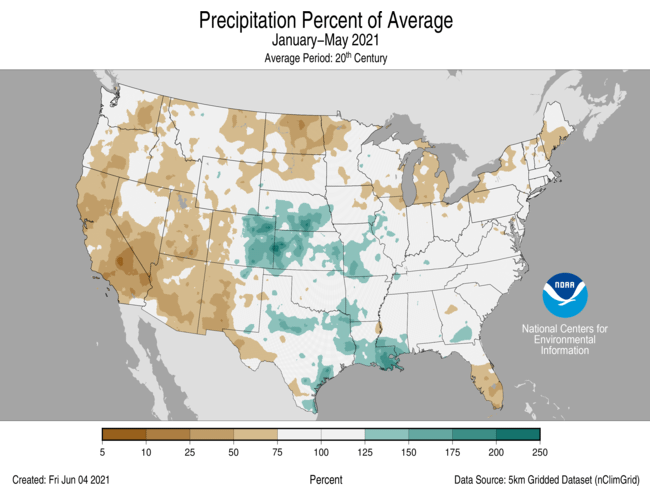
For more detailed climate information, check out our comprehensive May 2021 U.S. Climate report scheduled for release on June 11, 2021.